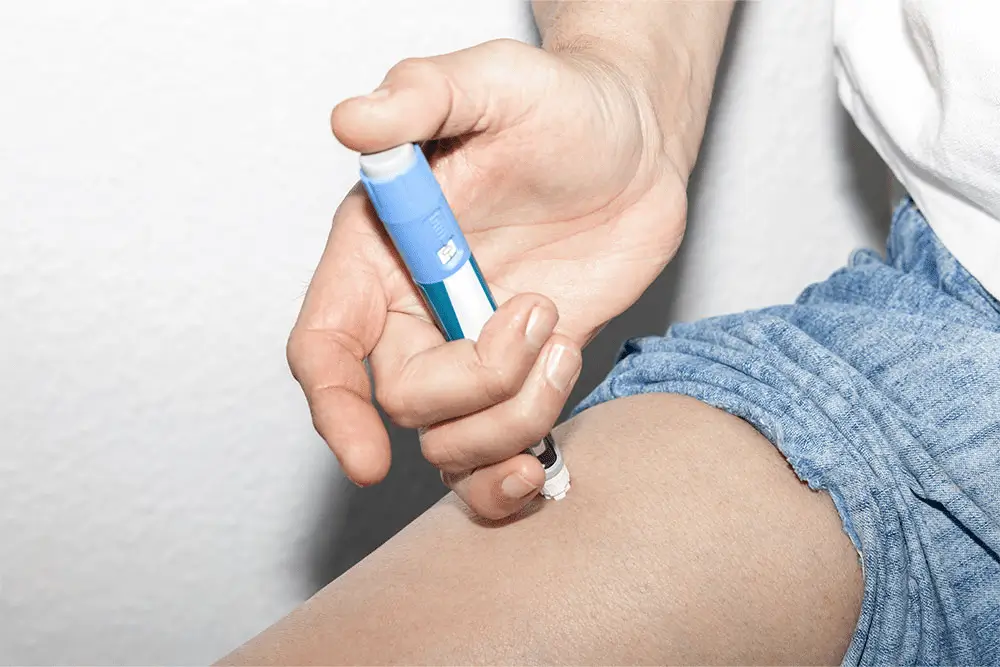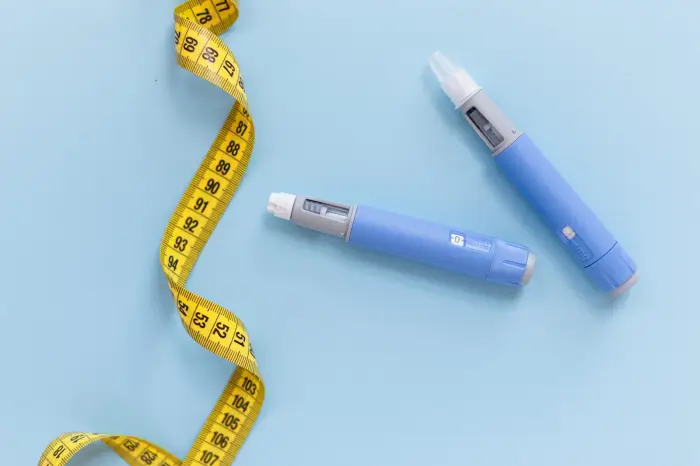
Achieving and maintaining weight loss isn’t just about appearance; it’s a powerful step toward better overall health. Even a modest reduction in body weight, around 5–10%, can lead to meaningful improvements in blood sugar levels, heart health, and long-term quality of life, according to the U.S. Centers for Disease Control and Prevention.
For those managing type 2 diabetes or facing challenges with weight, Mounjaro (tirzepatide) offers a new avenue of support. Approved by the U.S. Food and Drug Administration to help improve blood sugar control in adults with type 2 diabetes, this once-weekly injection has also shown promise in promoting significant weight loss when paired with healthy lifestyle habits. Although Mounjaro is not formally approved for weight management, many healthcare providers may prescribe it off-label for this purpose based on emerging clinical evidence.
In this guide, we’ll walk you through how to use Mounjaro correctly so you can get the most out of your treatment while staying safe and informed.
Key Takeaways
- Mounjaro is administered as a once-weekly injection using a single-dose, prefilled pen. Injections should be given subcutaneously in the abdomen, thigh, or upper arm, with rotation of sites each week.
- Proper injection technique matters. Always clean the site, press the pen flat against the skin, and listen for two clicks. Confirm the gray plunger is visible in the window to ensure the dose is complete.
- The dosing schedule begins at 2.5 mg weekly for 4 weeks, followed by stepwise increases (up to 15 mg) every 4 weeks based on patient response and tolerance. Include the 12.5 mg step in the escalation plan.
- Consistency is critical. Choose the same day each week for your injection, with or without food. If changing the day, ensure there are at least 3 days (72 hours) between doses.
- Missed a dose? If remembered within 4 days, take it immediately and continue your regular schedule. If more than 4 days have passed, skip it and resume on your usual day. Never double up.
- Store Mounjaro pens in the refrigerator between 36–46°F (2–8°C), or at room temperature (up to 86°F) for up to 21 days. Do not freeze. Keep pens capped and dispose of them in FDA-approved sharps containers.
- Mounjaro is FDA-approved for type 2 diabetes. Its use for weight management is considered off-label, though some clinicians may prescribe it for this purpose based on clinical judgment.
About: Doctor Medica is your trusted supplier of top-quality dermal fillers, viscosupplements, and more for your medical practice. We offer genuine products from leading brands at the lowest prices in the market. If you’re looking to order Mounjaro online for your practice, contact Doctor Medica today.
Mounjaro Administration: Injection Sites and Proper Technique

Learning how to use Mounjaro begins with understanding the correct injection technique. This medication comes in a single-dose, prefilled pen designed for straightforward self-injection at home. Choosing the right site and rotating it regularly helps reduce irritation and ensures consistent absorption for weight management.
Approved injection areas include:
- Abdomen: At least two inches away from the belly button
- Front/outer thigh: Easily accessible for self-injection
- Back of the upper arm: Ideal when administered by a caregiver
Before injecting, clean the skin with an alcohol swab. Press the pen flat against the skin and administer the dose subcutaneously (into the fatty tissue just beneath the skin). After pressing the button, listen for two clicks and check that the gray plunger is visible in the window — this confirms that the full dose has been delivered. Mastering these steps helps build patient confidence and supports long-term success.
Weekly Mounjaro Dosing Schedule and Dose Escalation

Mounjaro is taken once a week, making it easier for patients to stay consistent compared to daily regimens. Most people start with 2.5 mg once weekly for 4 weeks, which allows the body to gradually adjust. This is considered an initiation dose, not intended for full therapeutic effect.
After the initial phase, the dose is gradually increased to improve blood sugar control and support off-label weight loss goals. The typical dose escalation schedule is:
2.5 mg → 5 mg → 7.5 mg → 10 mg → 12.5 mg → 15 mg
Each increase occurs no sooner than every 4 weeks, depending on how well the medication is tolerated and how the patient is responding.
Injections can be taken at any time of day, with or without food, but they should be given on the same day each week. If a patient needs to change the day, the new dose should be taken at least 3 days (72 hours) apart from the last injection. Pairing the injection with a consistent weekly habit — like a weekend breakfast or a favorite show — can help support adherence.
What to Do With Missed Mounjaro Doses and Common Patient Mistakes
Even with reminders, missing a dose can happen. Here’s what to do if that occurs, and how to avoid common errors:
| Scenario | Action to Take | Notes |
| Remembered Within 4 Days (96 Hours) | Take the missed dose right away | Resume your regular weekly schedule |
| More Than 4 Days Late | Skip the missed dose | Take the next dose as scheduled |
| Thinking About Doubling Up | Never double up doses. | Risk of side effects increases |
| Common Mistakes | Injecting into muscle or reusing the same site | Rotate sites and inject into fatty tissue only |
| Schedule Shift | N/A | Keep at least 3 days between doses if changing your injection day |
Correct technique is key to safe and effective treatment. Patients comparing Mounjaro vs semaglutide often note that both therapies require consistent dosing routines — staying on track supports both glycemic control and weight goals.
Storage and Handling Guidelines for Mounjaro Pens
To keep Mounjaro effective and safe to use, it’s important to follow the proper storage and handling instructions:
- Refrigerate unused pens between 36–46°F (2–8°C). Store them in their original carton to protect from light.
- If refrigeration isn’t possible, unopened pens can be kept at room temperature (up to 86°F / 30°C) for up to 21 days. After that, they should be discarded.
- Never freeze the pen. If it has been frozen, it should not be used — even if thawed.
- Keep the cap on until you’re ready to inject to avoid contamination or accidental activation.
- Inspect the solution before use. It should be clear and colorless to slightly yellow. Do not use if it looks cloudy or expired.
- Dispose of used pens in an FDA-cleared sharps container. Do not throw them in household trash to prevent injury to others.
Following these steps helps ensure that each dose is safe, accurate, and effective for ongoing therapy.
Conclusion
Understanding how to use Mounjaro properly — from injection technique to storage — empowers patients to get the most benefit from treatment. While Mounjaro is approved for type 2 diabetes, some healthcare providers also prescribe it off-label for weight management based on emerging clinical evidence.
Whichever the goal, maintaining a consistent schedule, using the correct technique, and handling the medication properly are all essential for safe, successful outcomes that let patients maximize the results of their therapy.
FAQs
1. Where should I inject Mounjaro?
You can inject Mounjaro into the abdomen (at least 2 inches from the navel), thigh, or upper arm (if someone helps). Rotate sites each week to avoid skin irritation.
2. What happens if I miss a Mounjaro dose?
If you remember within 4 days, take the missed dose. If more than 4 days have passed, skip it and take the next one as scheduled. Always keep at least 3 days between doses.
3. Can I use Mounjaro at room temperature?
Yes, for up to 21 days. After that, it must be discarded. It’s best to store it in the fridge when possible.
4. How do I know my Mounjaro pen is working correctly?
You should hear two clicks and see the gray plunger in the pen window. This confirms the full dose was delivered.
References
Centers for Disease Control and Prevention. Benefits of losing weight. CDC. Updated November 9, 2023. https://www.cdc.gov/healthyweight/losing_weight/index.html
Centers for Disease Control and Prevention. Healthy weight—It’s not a diet, it’s a lifestyle! CDC. Updated November 9, 2023. https://www.cdc.gov/healthyweight/losing_weight/benefits.html
Scheen A. Le médicament du mois. Le tirzépatide (Mounjaro®)▼: un agoniste double des récepteurs GIP/GLP-1 pour le traitement du diabète de type 2 [Tirzepatide (Mounjaro®) : a GIP/GLP-1 receptor dual agonist for the treatment of type 2 diabetes]. Rev Med Liege. 2025;80(9):618-624.
Al-Mahzoum K, Abdelaziz DH, Alenezi F, et al. Health beliefs and obesity bias as determinants of attitudes toward the rising tides of GLP-1 medications: Mounjaro and Ozempic. Taylor & Francis. Published online May 2, 2025. https://www.tandfonline.com/doi/full/10.2147/DMSO.S518994
Related Articles
Joanna Carr
Why You Need to Keep Track of Patient Attrition
Keeping track of patient attrition can help maintain and grow your med spa. Doctor Medica brings you tips on how to minimize potential loss of clients...
Joanna Carr
Saxenda vs Mounjaro – Which Is Better for Weight Loss
Saxenda and Mounjaro are medications used for weight management, each with its unique mechanisms of action and benefits.
Joanna Carr
Hymovis Dosing Schedule
Hymovis is an advanced hyaluronic acid-based treatment designed to reduce pain and improve mobility in patients with knee osteoarthritis.


